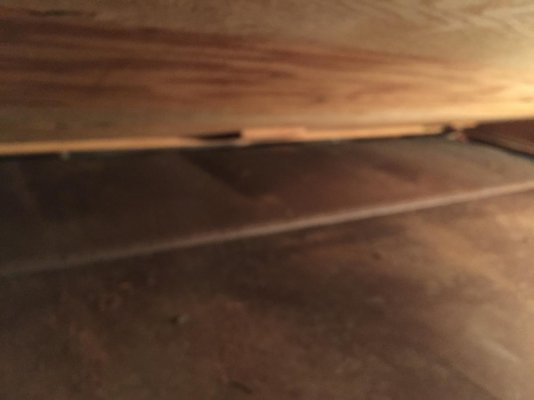Restitution
Senior Member
Our Californian has twin full size beds in the rear bedroom as most do. Under these beds lie twin 125 gallon fuel tanks per side. I need to remove the tanks on the starboard side. I'm considering cutting the bulkhead to push tank rearward to allow room to lift front of tanks out. Does anybody have any experience with this? Do I need to remove bed framing and night stand between beds?
Question #2...The reason for removal....freak accident:
I was filling up one of the starboard tanks last fall. This tank has always had a burping issue that I never seriously chased down. It doesn't vent well. Historically, I simply full it slowly. On this day, I begin filling at a higher pressure station than what I'm used to. I put the nozzle into the fuel hole. The nozzle has a small lip on it which sat loosely on the inside of the fuel filler. 10 minutes later, I lift up on the nozzle and the nozzle shoots up in the air under very high pressure with copious amounts of diesel spewing all over me, the boat and the docks. The gyser went 20 feet in the air. I have absolutely no idea as to how the nozzle sealed into the filler cap. It was loose when I inserted it there is no I ring, no air pressure was escaping?
I'm at a loss as to The physics of why this occurred. Any similar experiences?
Luckily, the end result is only a leaking and very bulging fuel tank. Yes, somehow this could have ended up worse.
Question #2...The reason for removal....freak accident:
I was filling up one of the starboard tanks last fall. This tank has always had a burping issue that I never seriously chased down. It doesn't vent well. Historically, I simply full it slowly. On this day, I begin filling at a higher pressure station than what I'm used to. I put the nozzle into the fuel hole. The nozzle has a small lip on it which sat loosely on the inside of the fuel filler. 10 minutes later, I lift up on the nozzle and the nozzle shoots up in the air under very high pressure with copious amounts of diesel spewing all over me, the boat and the docks. The gyser went 20 feet in the air. I have absolutely no idea as to how the nozzle sealed into the filler cap. It was loose when I inserted it there is no I ring, no air pressure was escaping?
I'm at a loss as to The physics of why this occurred. Any similar experiences?
Luckily, the end result is only a leaking and very bulging fuel tank. Yes, somehow this could have ended up worse.
Last edited:



